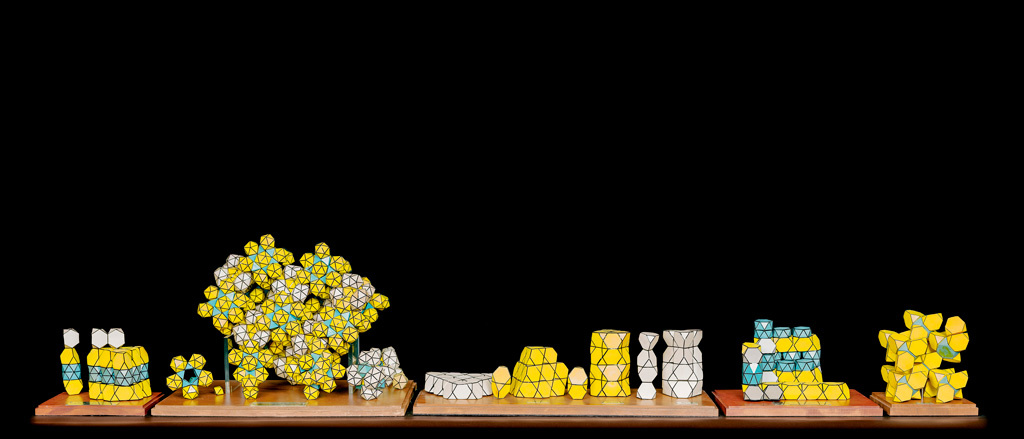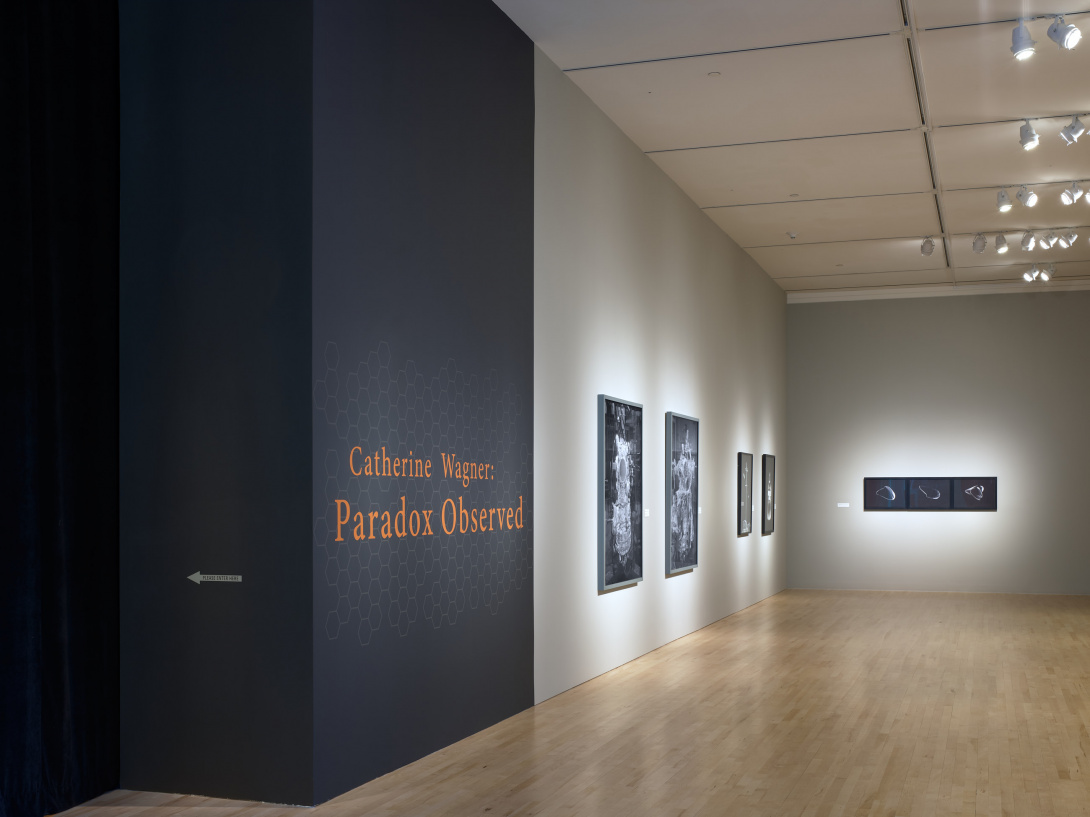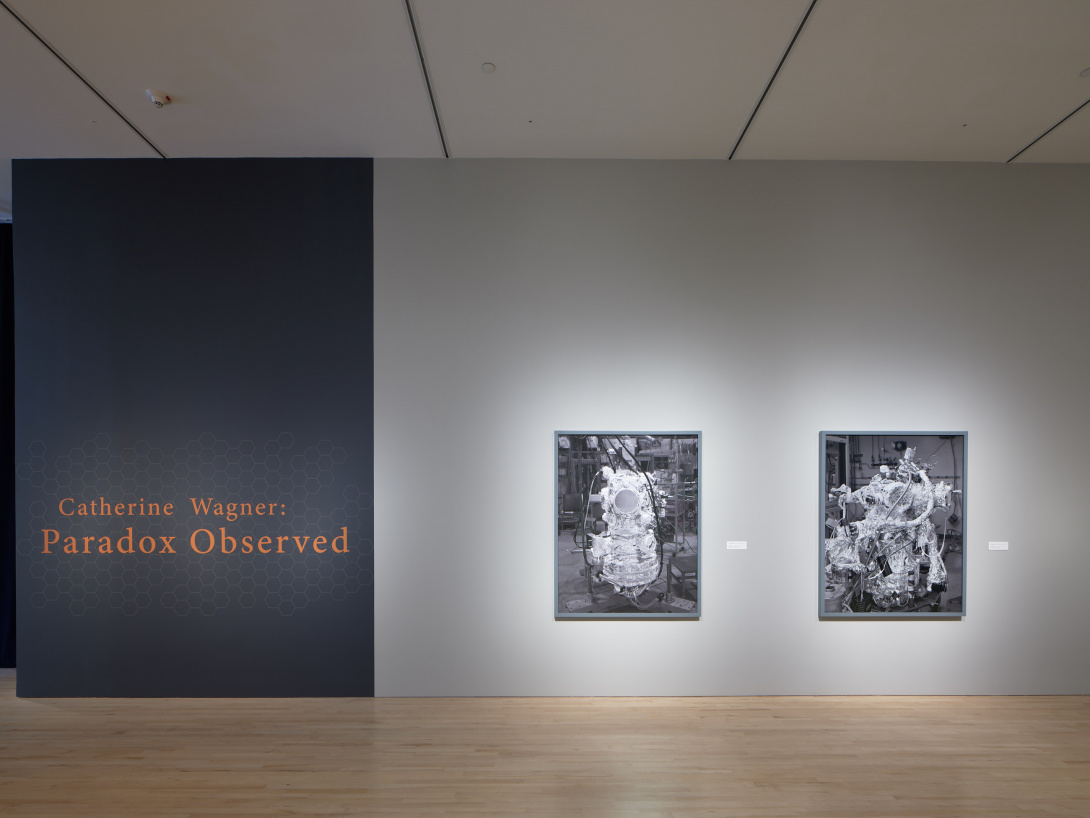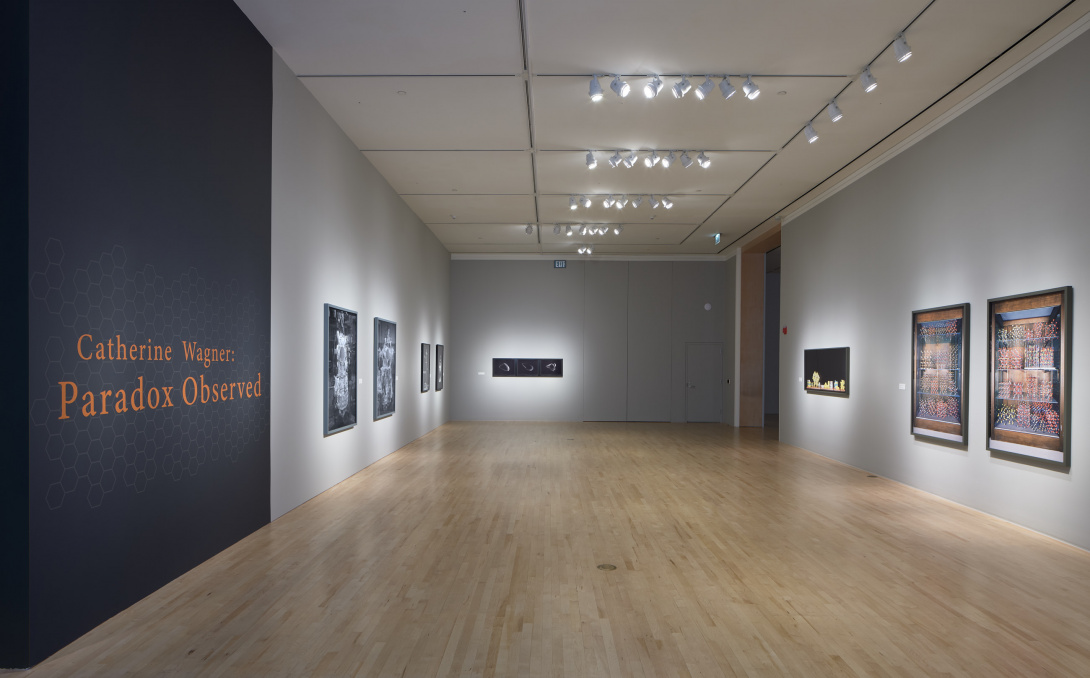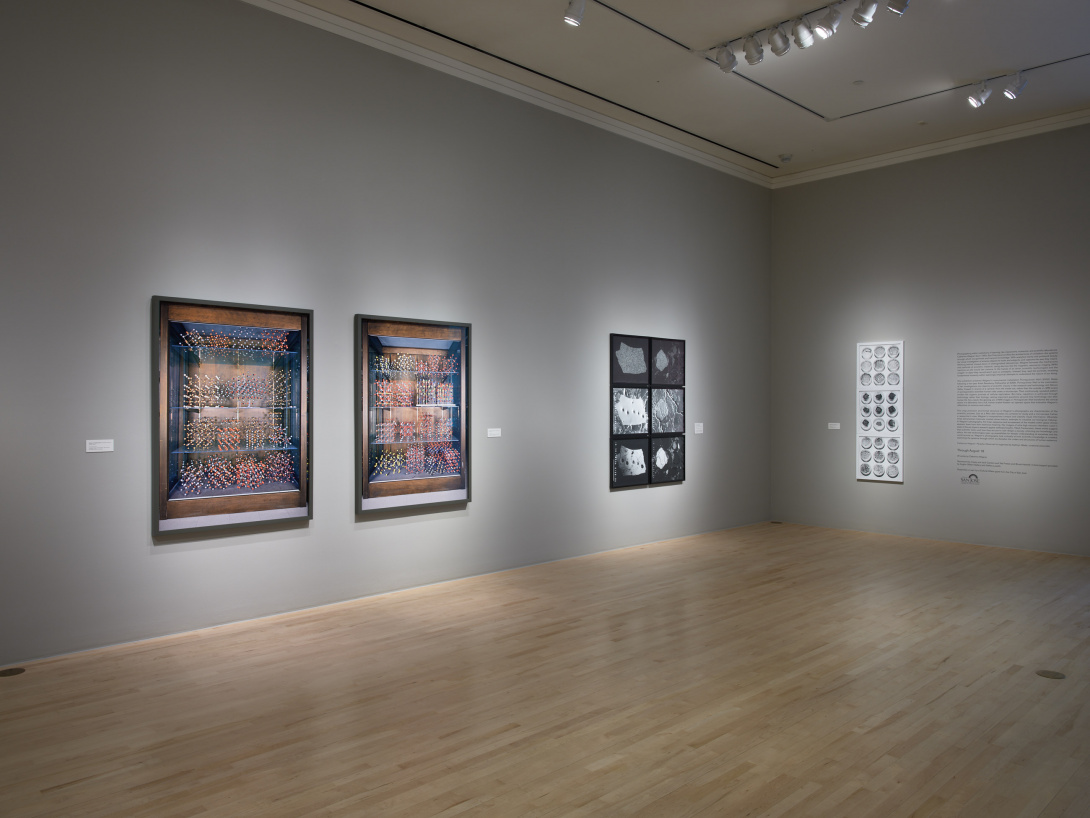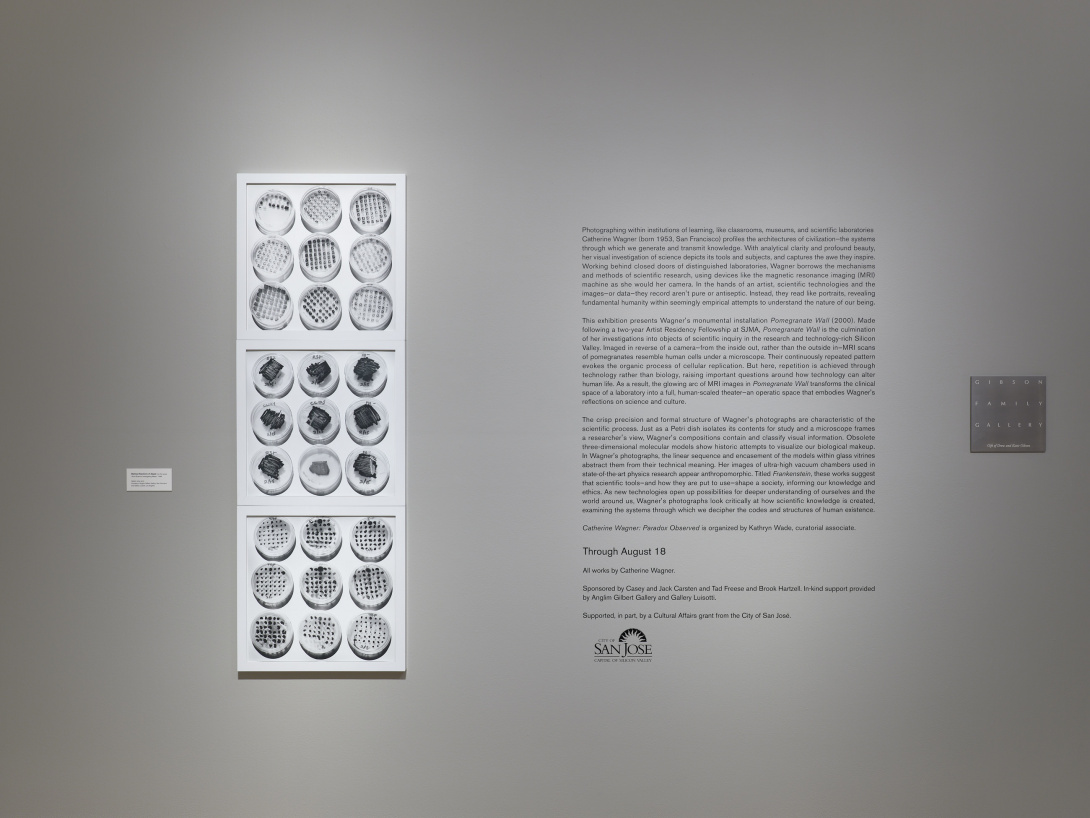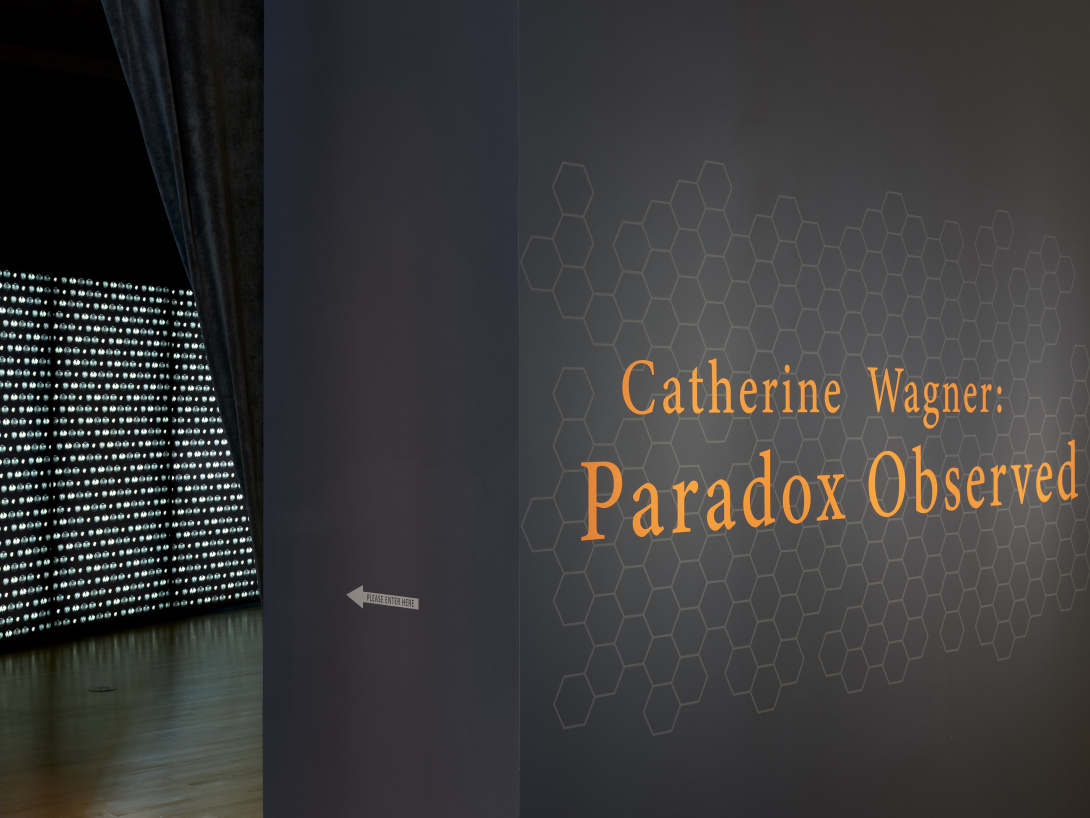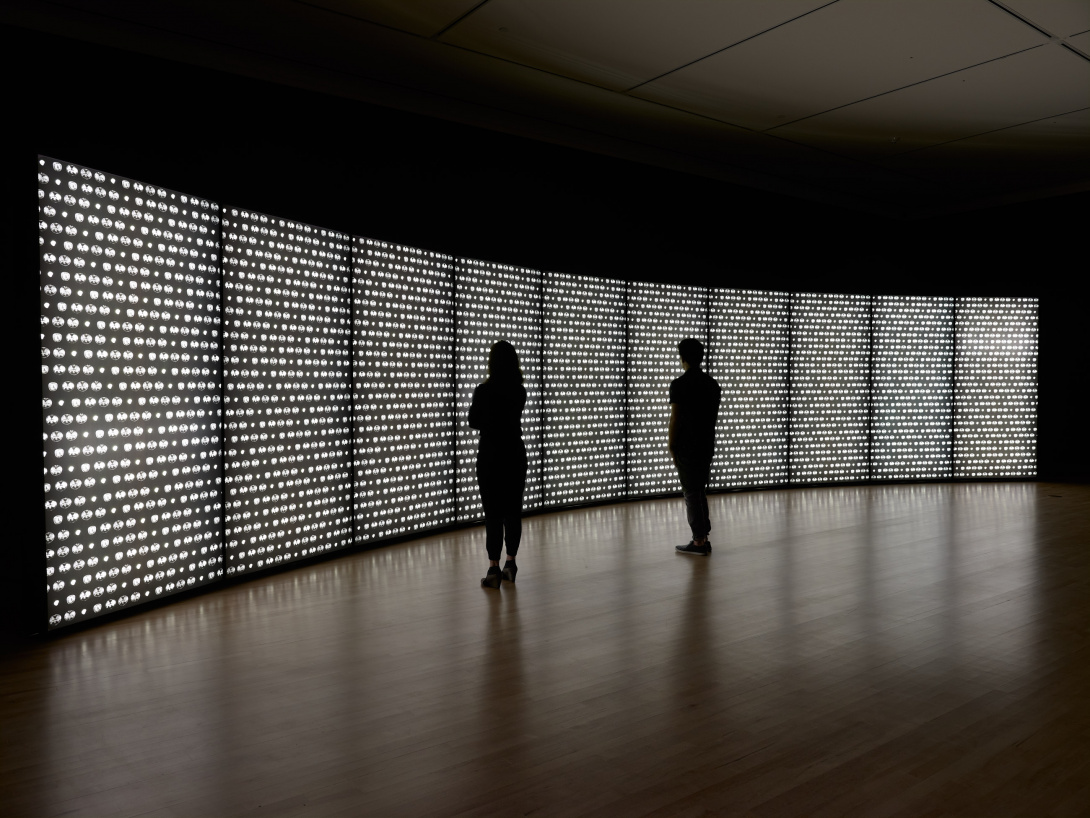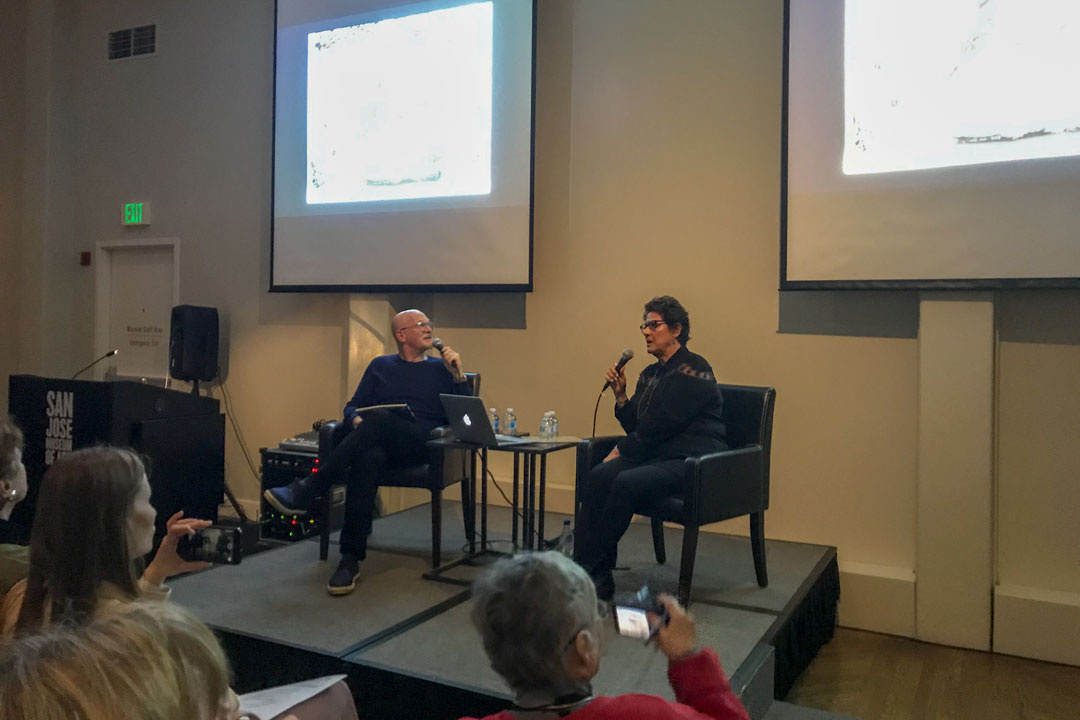Catherine Wagner: Paradox Observed presents the monumental installation Pomegranate Wall (2000) along with stunning photographs of plant, animal, and cosmic matter from Wagner’s visual investigation of science. Taken behind closed doors of distinguished laboratories, her photographs capture the mystery and beauty of the scientific endeavor—the desire and struggle to empirically understand the nature of our being. With analytical clarity and larger-than-life scale, the works in the exhibition evoke the parallel pursuits of science and art to decipher the codes and structures of human existence though observation.
With scientific matters as her subject, Wagner adopted its tools of observation using imaging devices typically reserved for scientific study as she would her camera. Working with magnetic resonance imaging (MRI) machines and scanning electron microscopes (SEM), she captured organic materials like the cross section of an onion and the textured surface of a shark’s tooth with crisp precision. At the center of the exhibition is Wagner’s immersive installation Pomegranate Wall, a glowing 8-by-40-foot arc of photographs taken with an MRI machine.
Made following a two-year Artist Residency Fellowship SJMA awarded Wagner in 1997, Pomegranate Wall is the culmination of her exploration into scientific institutions where her photographic documentation and use of technologies like the MRI machine act as a counterpart to scientific research. Imaged in reverse of a camera—from the inside out, rather than the outside in—cross-section scans of pomegranates resemble human cells under a microscope. Monumentally scaled and clinically backlit in Pomegranate Wall, Wagner’s images possess the authoritative weight of scientific inquiry. But their abstraction presents a paradox: these seemingly pure images are constructed. Though composed of real data, their order and classification—the modes of analyzing visual information—are fundamentally impacted by the observer.
The crisp precision and compositional structure of Wagner’s photographs are characteristic of the scientific process. Just as a Petri dish isolates its contents for study and a microscope frames a researcher’s view, Wagner’s compositions contain, classify, and sequence visual information. A six-part typology of meteorites depicts various modes of visual analysis, including x-ray, chemical, and topographic studies, to make meaning of cosmic specimens. Obsolete three-dimensional molecular models encased within glass vitrines show historic attempts to visualize the complex relationships in order to understand our biological makeup. As alluded to in the title of Wagner’s Frankenstein series, which depict anthropomorphic looking ultra-high vacuum chambers used in state-of-the-art physics research, the tools of science shape society. As new technologies open up possibilities for a deeper understanding of ourselves and the world around us, Wagner’s photographs look critically at how scientific knowledge and the systems through which we interpret the essence of being are created.
Artist Biography
Catherine Wagner was born in 1953 in San Francisco. She received her BA in 1975 and MA in 1981, both from San Francisco State University. She is the recipient of major awards, including the Rome Prize (2013–14), a Guggenheim Fellowship, NEA Fellowships, and the Ferguson Award. Her work is included in major museum collections including the Los Angeles County Museum of Art; San Francisco Museum of Modern Art; The Whitney Museum of American Art, New York; Museum of Modern Art, New York; Museum of Fine Art, Houston; and the San José Museum of Art.
Press
The DART Board: In San Franciscoe, AI-AP
August 14, 2019
An early start to celebrating the US centennial of women’s suffrage, The Art Newspaper
August 20, 2019
Sponsored by Casey and Jack Carsten and Tad Freese and Brook Hartzell. In-kind support provided by Anglim Gilbert Gallery and Gallery Luisotti.
